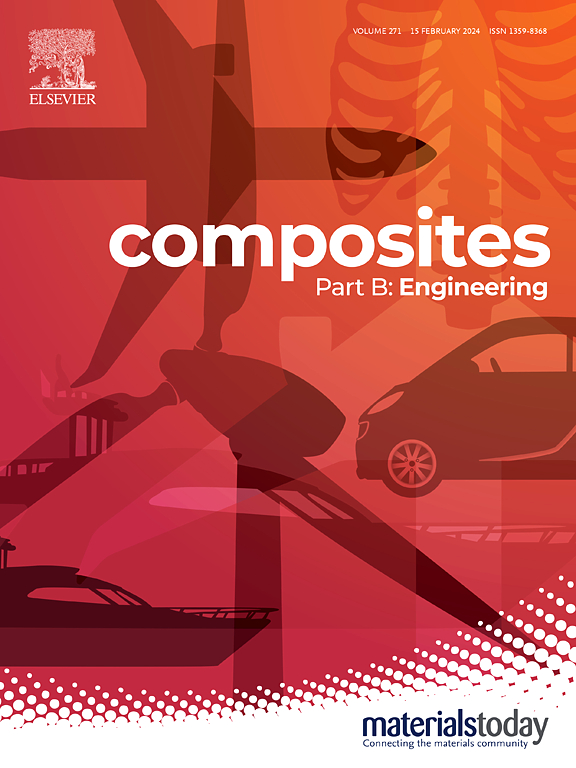Pulsed laser engineering of composite submicron particles in colloidal systems: A high-performance catalyst for ethanol fuel cells
IF 12.7
1区 材料科学
Q1 ENGINEERING, MULTIDISCIPLINARY
引用次数: 0
Abstract
Nanoparticles are widely regarded as optimal for catalytic reactions; however, larger particles with highly active surfaces may offer an intriguing alternative for advancing catalytic technologies. This study employs pulsed laser melting to transform colloidal copper/magnetite nanoparticles into surface-active submicron CuxFe3-xO4-CuyO-CuzFe1-z composite particles, tailored for ethanol oxidation fuel cells. The findings reveal that colloidal particles tend to cluster into either homogeneous or heterogeneous aggregates, mediated by the surrounding liquid. This clustering aids the formation of desired phases during pulsed laser processing. Temperature-dependent thermodynamic phase transitions, combined with pulse-driven heating-cooling dynamics, promote copper oxidation and magnetite reduction, achieving both compositional control and microstructural surface activation. The synthesized heterostructures demonstrated excellent performance in ethanol oxidation, both as primary catalytic materials and as activity-enhancing supports for platinum. Oxidation state analysis post electrocatalysis indicated a reduction in graphite bonds and an increase in oxygen bonds, attributed to the high oxygen content of the catalysts’ surface. The electrocatalysis ethanol oxidation process generated potent oxidizing agents, including ozone, oxygen and hydroxyl radicals, with the ability of degrading the sp2 hybrid structure of graphite. Despite their submicron size, the kinetically activated composite particles exhibited exceptional surface activity, positioning them as cost-effective alternatives to the conventional catalysts for fuel cell technologies.

胶体体系中复合亚微米颗粒的脉冲激光工程:乙醇燃料电池的高性能催化剂
纳米颗粒被广泛认为是催化反应的最佳材料;然而,具有高活性表面的大颗粒可能为推进催化技术提供一个有趣的替代方案。本研究采用脉冲激光熔融将胶体铜/磁铁矿纳米颗粒转化为具有表面活性的亚微米cuxfe3 - xo4 - cuyoo - cuzfe1 -z复合颗粒,为乙醇氧化燃料电池量身定制。研究结果表明,在周围液体的介导下,胶体颗粒倾向于聚集成均匀或非均匀的聚集体。这种聚类有助于脉冲激光加工过程中所需相位的形成。温度依赖的热力学相变,结合脉冲驱动的加热-冷却动力学,促进铜氧化和磁铁矿还原,实现成分控制和微观结构表面活化。合成的异质结构在乙醇氧化中表现出优异的性能,既可以作为一级催化材料,也可以作为铂的活性增强载体。电催化后的氧化态分析表明,由于催化剂表面的高氧含量,石墨键减少,氧键增加。电催化乙醇氧化过程产生强氧化剂,包括臭氧、氧和羟基自由基,具有降解石墨sp2杂化结构的能力。尽管它们的尺寸只有亚微米,但动力活化的复合颗粒表现出了优异的表面活性,使它们成为燃料电池技术中传统催化剂的经济替代品。
本文章由计算机程序翻译,如有差异,请以英文原文为准。
求助全文
约1分钟内获得全文
求助全文
来源期刊

Composites Part B: Engineering
工程技术-材料科学:复合
CiteScore
24.40
自引率
11.50%
发文量
784
审稿时长
21 days
期刊介绍:
Composites Part B: Engineering is a journal that publishes impactful research of high quality on composite materials. This research is supported by fundamental mechanics and materials science and engineering approaches. The targeted research can cover a wide range of length scales, ranging from nano to micro and meso, and even to the full product and structure level. The journal specifically focuses on engineering applications that involve high performance composites. These applications can range from low volume and high cost to high volume and low cost composite development.
The main goal of the journal is to provide a platform for the prompt publication of original and high quality research. The emphasis is on design, development, modeling, validation, and manufacturing of engineering details and concepts. The journal welcomes both basic research papers and proposals for review articles. Authors are encouraged to address challenges across various application areas. These areas include, but are not limited to, aerospace, automotive, and other surface transportation. The journal also covers energy-related applications, with a focus on renewable energy. Other application areas include infrastructure, off-shore and maritime projects, health care technology, and recreational products.
 求助内容:
求助内容: 应助结果提醒方式:
应助结果提醒方式:


